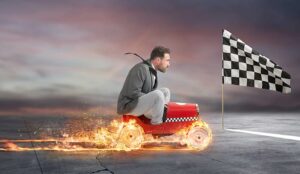Call centre metrics are essential for tracking performance, improving customer experience, and driving business success. However, simply collecting data isn’t enough – understanding what to measure and how to use those insights effectively is key.
To find out more, we asked industry experts Dan Moross, Katie Stabler, Garry Gormley, Daniel Ord, Nerys Corfield, Justin Robbins, Sarah Morgan, Jason Griffin, Natalie Calvert, and Rob Clarke, for their favourite advice to better use metrics in your contact centre.
Video: 10 Experts Share Their Favourite Advice on Call Centre Metrics
Part One – Expert Advice on Call Centre Metrics
Watch the video below to hear Dan, Katie, Garry, Daniel, and Nerys share their top tips for better using call centre metrics:
With thanks to the following people for contributing to this video:
- Dan Moross, MOO
- Katie Stabler, CULTIVATE Customer Experience by Design
- Garry Gormley, FAB Solutions
- Daniel Ord, OmniTouch International
- Nerys Corfield, Injection Consulting
Part Two – Expert Advice on Call Centre Metrics
Watch the video below to hear Justin, Sarah, Jason, Natalie, and Rob share their top tips for better using call centre metrics:
With thanks to the following people for contributing to this video:
- Justin Robbins
- Sarah Morgan, Luceat Coaching
- Jason Griffin, EMEA Principal Solution Consultant at Five9
- Natalie Calvert, CX High Performance
- Rob Clarke, Co-Founding Partner – Elev-8 Performance
10 Expert Tips for Call Centre Metrics
To help you optimise your approach, we’ve put together ten expert-backed strategies that focus on selecting meaningful metrics, avoiding common pitfalls, and ensuring your data drives real improvements:
1. Measure What Matters

In the contact centre world, you can look up documents online that show you the “standard” things to measure in the contact centre. But you need to measure what matters, not just what everybody else is measuring.
We at MOO have done many exercises over the years to determine what matters most to our primary stakeholders: our customers, employees and our shareholders.
We have thought about: what matters most to those groups?
Then, pick a small number of metrics for each of them and consider how you will go about measuring them.
Contributed by: Dan Moross
For more on measuring what matters, read our article: Contact Centre Metrics: Are You Measuring the Right Things?
2. Avoid These Toxic Metric Habits

Avoid your call centre metrics turning toxic by firstly ensuring that there are no contradictions between actual performance and the numbers.
Make sure that they actually inform decision-making. That is super important!
Also, don’t just mindlessly chase numbers and ensure that your metrics don’t become targets.
Finally, make sure that they are balanced and that you are measuring a number of things that are important to your own operation.
Contributed by: Katie Stabler
Find more advice from Katie on this topic in our article: How to Use Inbound Call Centre Metrics to Drive Performance
3. Consider the Unintended Consequences of Your Metric Choices

What gets measured, quite often gets managed. So, the first tip is to be crystal clear in the metrics that are most important to your customer journey.
At the same time, consider what some of the unintended consequences are of what you want to measure.
Quite often, for example, you’ll see Average Handling Time (AHT) being a measure, but that can have an impact on things like:
- How polite people are
- How much rapport they build
- How focused they are on listening
- How much they rush through the call
So, think about those unintended consequences and be clear about what you want to measure.
Contributed by: Garry Gormley
4. Categorize Your Metrics

I find it really helpful to take your big collection of metrics and put them into categories because categories are a lot easier to work with, explain and understand.
The categories that I tend to look at when I organize metrics are:
- Quality Metrics
- Accessibility Metrics
- Efficiency Metrics
- Cost Metrics
- Strategic Metrics
You can think of this as “QAECS“, which I use as a mnemonic device to help me remember.
So, for example, if you’re looking at the quality of a live chat or call, clearly that is going to be categorized as a quality metric.
If you’re looking at service level, that would go in as an accessibility metric. If you’re looking at customer satisfaction (CSat) or engagement, those are strategic metrics.
Trying to deal with long lists of metrics can be overwhelming, so my tip is to put them into these logical categories and make it easier to understand and explain.
Contributed by: Daniel Ord
5. Consider the “Why” Behind Each Metric

You can measure and monitor practically everything that an agent or a customer does. But just because you can doesn’t mean that you should.
My top tip is to, at least quarterly, get into a room or a video call and review all of your management information suite and determine:
- Why do we measure this?
- What value does it bring to the customer?
- What value does it bring to the agent?
- What value does it bring to the operation?
Contributed by: Nerys Corfield
6. Stop Chasing Numbers

There are two things that we need to focus on when it comes to what we measure:
- Predicting outcomes
- Measuring outcomes
This is really important because it puts us in the mindset of “the outcome”. What is the thing that we hope to see as a result of our contact centre strategies?
We should not just keep going after a number. So often, with metrics, we get into this pursuit of a score, without clearly thinking: what are we trying to drive or what are we trying to predict?
So, look over all of your metrics and put those into two categories:
- What helps you predict your desired outcomes?
- What helps you to determine whether or not you are achieving them?
Contributed by: Justin Robbins
7. Be Clear on Your Outcomes

What you measure is what you get. It’s human nature to work to the metrics, and therefore you need to be clear on the customer outcomes that you are looking for.
If your call centre metrics are all about AHT, volumes of calls etc., that’s all the insight that you are going to get.
So, think about the customer experience that you want as well, what outcomes you want for the customer, and make sure that you have metrics that cover that element as well.
By adding these metrics and changing your focus, what you’ll end up with is a much richer experience for the customer.
Contributed by: Sarah Morgan
8. Move Away From Standardized Reporting

Reporting is how you can build anything in a contact centre environment. What the contact centre needs is access to those metrics.
But it’s not all about access. It’s also about looking at the right metrics at the right time, when that data can make a real difference.
The right time is normally in real time, because you want to see it right there and then, but it’s also historical as well, so you can understand key trends.
Yet, sometimes it can all get a bit convoluted and it becomes difficult – in the world of big data – to determine what you should be looking at and how you should be looking at it.
The key message here is not to get lost in the data, because there is a lot of data, but it’s also important to look at the right data that’s right for you.
So, you want to analyse your metrics and create custom reports, showing the right metrics at the right time, so you can properly assess your key outcomes.
Contributed by: Jason Griffin
For more guidance on how to best use contact centre reports, read our article: A Quick Guide to Call Centre Reporting – With the Top Seven Reports, Examples and Tips
9. Stop the Command and Control Leadership

We have got to get into some realism here about how the world has shifted, and how our customers and how our employees have shifted as well.
The big challenge that we have got to get our heads around and to create a really strong metrics plan around is community.
This involves thought around:
- How are we impacting our customer community?
- How are we impacting our employee community?
- How are we impacting our shareholder community?
So we really need to think about our metrics so that we drive the right behaviours. Community is where it is at now. Forget command and control.
Contributed by: Natalie Calvert
10. Deliver Actionable Insights

When it comes to call centre metrics, it is all about measuring the right things.
Many contact centres produce many reports and what we often see is that little happens with some of those reports.
So, if a metric doesn’t drive action, actionable insight or return on effort, then I’d question why you are measuring it.
A classic example is AHT. As a management tool, AHT can be great for workforce planning. It is not, however, a great indicator of effectiveness.
Typically in a contact centre, if you increase AHT that would be frowned upon. However, that could leverage a better customer conversation and we have a case study where doing just that creates a £60 million return.
So, increasing AHT was the right thing to do for that contact centre, which went against their previous use of the metric.
Contributed by: Rob Clarke
If you are looking for more great insights from the experts, check out these next:
- 10 Experts Tips for Employee Engagement
- 10 Ways to Reduce AHT in the Contact Centre
- 10 Expert Tips for Remote Working
- 4 Expert Tips for Your Contact Centre
Author: Robyn Coppell
Reviewed by: Jo Robinson
Published On: 17th Feb 2021 - Last modified: 25th Sep 2025
Read more about - Video, Dan Moross, Daniel Ord, Editor's Picks, Five9, Garry Gormley, Justin Robbins, Katie Stabler, Metrics, Natalie Calvert, Nerys Corfield, Rob Clarke, Sarah Morgan, Team Management, Videos





































